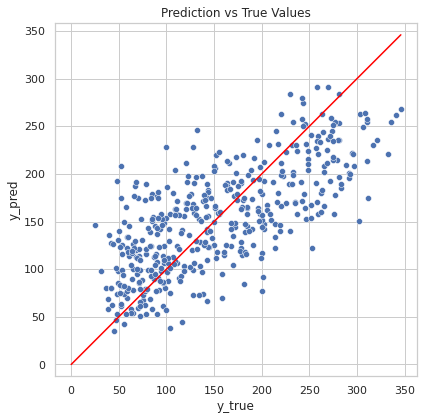ML - Regression#
import numpy as np
import pandas as pd
import matplotlib.pyplot as plt
import seaborn as sns
from sklearn import datasets
sns.set_theme(style="whitegrid")
%matplotlib inline
---------------------------------------------------------------------------
ModuleNotFoundError Traceback (most recent call last)
Cell In[1], line 4
2 import pandas as pd
3 import matplotlib.pyplot as plt
----> 4 import seaborn as sns
6 from sklearn import datasets
8 sns.set_theme(style="whitegrid")
ModuleNotFoundError: No module named 'seaborn'
Motivation#
Ten baseline variables, age, sex, body mass index, average blood pressure, and six blood serum measurements were obtained for each of n = 442 diabetes patients, as well as the response of interest, a quantitative measure of disease progression one year after baseline.
Source: https://scikit-learn.org/stable/datasets/toy_dataset.html#diabetes-dataset
diabetes_X, diabetes_y = datasets.load_diabetes(return_X_y=True, as_frame=True)
diabetes = pd.concat([diabetes_X, diabetes_y], axis=1)
diabetes.head()
| age | sex | bmi | bp | s1 | s2 | s3 | s4 | s5 | s6 | target | |
|---|---|---|---|---|---|---|---|---|---|---|---|
| 0 | 0.038076 | 0.050680 | 0.061696 | 0.021872 | -0.044223 | -0.034821 | -0.043401 | -0.002592 | 0.019907 | -0.017646 | 151.0 |
| 1 | -0.001882 | -0.044642 | -0.051474 | -0.026328 | -0.008449 | -0.019163 | 0.074412 | -0.039493 | -0.068332 | -0.092204 | 75.0 |
| 2 | 0.085299 | 0.050680 | 0.044451 | -0.005670 | -0.045599 | -0.034194 | -0.032356 | -0.002592 | 0.002861 | -0.025930 | 141.0 |
| 3 | -0.089063 | -0.044642 | -0.011595 | -0.036656 | 0.012191 | 0.024991 | -0.036038 | 0.034309 | 0.022688 | -0.009362 | 206.0 |
| 4 | 0.005383 | -0.044642 | -0.036385 | 0.021872 | 0.003935 | 0.015596 | 0.008142 | -0.002592 | -0.031988 | -0.046641 | 135.0 |
First 10 columns are numeric predictive values
Column 11 is a quantitative measure of disease progression one year after baseline
Feature |
Description |
|---|---|
age |
age in years |
sex |
sex |
bmi |
body mass index |
bp |
average blood pressure |
s1 |
tc, T-Cells (a type of white blood cells) |
s2 |
ldl, low-density lipoproteins |
s3 |
hdl, high-density lipoproteins |
s4 |
tch, thyroid stimulating hormone |
s5 |
ltg, lamotrigine |
s6 |
glu, blood sugar level |
Note: Each of these 10 feature variables have been mean centered and scaled by the standard deviation times the square root of n_samples (i.e. the sum of squares of each column totals 1).
diabetes.describe().T
| count | mean | std | min | 25% | 50% | 75% | max | |
|---|---|---|---|---|---|---|---|---|
| age | 442.0 | -2.511817e-19 | 0.047619 | -0.107226 | -0.037299 | 0.005383 | 0.038076 | 0.110727 |
| sex | 442.0 | 1.230790e-17 | 0.047619 | -0.044642 | -0.044642 | -0.044642 | 0.050680 | 0.050680 |
| bmi | 442.0 | -2.245564e-16 | 0.047619 | -0.090275 | -0.034229 | -0.007284 | 0.031248 | 0.170555 |
| bp | 442.0 | -4.797570e-17 | 0.047619 | -0.112399 | -0.036656 | -0.005670 | 0.035644 | 0.132044 |
| s1 | 442.0 | -1.381499e-17 | 0.047619 | -0.126781 | -0.034248 | -0.004321 | 0.028358 | 0.153914 |
| s2 | 442.0 | 3.918434e-17 | 0.047619 | -0.115613 | -0.030358 | -0.003819 | 0.029844 | 0.198788 |
| s3 | 442.0 | -5.777179e-18 | 0.047619 | -0.102307 | -0.035117 | -0.006584 | 0.029312 | 0.181179 |
| s4 | 442.0 | -9.042540e-18 | 0.047619 | -0.076395 | -0.039493 | -0.002592 | 0.034309 | 0.185234 |
| s5 | 442.0 | 9.293722e-17 | 0.047619 | -0.126097 | -0.033246 | -0.001947 | 0.032432 | 0.133597 |
| s6 | 442.0 | 1.130318e-17 | 0.047619 | -0.137767 | -0.033179 | -0.001078 | 0.027917 | 0.135612 |
| target | 442.0 | 1.521335e+02 | 77.093005 | 25.000000 | 87.000000 | 140.500000 | 211.500000 | 346.000000 |
diabetes.apply(np.linalg.norm)
age 1.000000
sex 1.000000
bmi 1.000000
bp 1.000000
s1 1.000000
s2 1.000000
s3 1.000000
s4 1.000000
s5 1.000000
s6 1.000000
target 3584.818126
dtype: float64
sns.pairplot(diabetes)
<seaborn.axisgrid.PairGrid at 0x7feedd878190>

Linear Regression#
The first approach is to work with a linear model. Let’s suppose we have \(n\) samples of data and each sample \(x^{(i)} \in \mathbb{R}^{p \times 1}\) where \(p\) denotes the number of features. Then
And for each \(x^{(i)}\) we know the target value denoted by \(y^{(i)} \in \mathbb{R}\), \(i=1,\dots, n\) .
Let’s consider a lineal function \(h\) and a vector of coefficients \(\beta \in \mathbb{R}^{(p+1) \times 1}\) such that
Let’s define the matrix of inputs \(X \in \mathbb{R}^{n \times (p + 1)} \), also know as design matrix, model matrix or regressor matrix, and the output vector \(y \in \mathbb{R}^n\) such that
Notice that now we can write this as a matrix operation
Then our goal is to find an adequate vector of coefficients \(\beta\) such taht $\( \begin{bmatrix}y^{(1)} \\ y^{(2)} \\ \vdots \\ y^{(n)}\end{bmatrix} \approx \begin{bmatrix} f_\beta(x^{(1)}) \\ f_\beta(x^{(2)}) \\ \vdots \\ f_\beta(x^{(n)}) \end{bmatrix} \)$
that is equivalent to $\(y \approx X \beta \)$
Gradient Descent#
Let’s define our cost function
The goal is to solve the following optimization problem
Gradient descent is an optimization algorithm which is commonly-used to train machine learning models. The idea is to take repeated steps in the opposite direction of the gradient because this is the direction of steepest descent.
The algorithm can be written as
where \(\alpha >0\) is called learning rate. Now, let’s compute the gradient of \(J(\beta)\). For any \(k = 0, \ldots, p\) we have
Then $\( \begin{aligned} \nabla_{\beta} J(\beta) &= \left( \sum_{i=1}^{n} \left( y^{(i)} - f_{\beta}(x^{(i)})\right) x^{(i)}_0, \dots, \sum_{i=1}^{n} \left( y^{(i)} - f_{\beta}(x^{(i)})\right) x^{(i)}_p \right)^\top = X^\top \left( y - X \beta \right) \end{aligned} \)$
Note that \(\alpha\) is a parameter from the algorithm and not from the model itself. These kind of parameters are usually named as hyper-parameters and to find the best one is a big task itself.
Implementation#
from sklearn.linear_model import LinearRegression
model = LinearRegression()
model.fit(diabetes_X, diabetes_y)
print(f"Coefficients:\n {model.coef_.T}\n")
print(f"Score: {model.score(diabetes_X, diabetes_y)}")
Coefficients:
[ -10.0098663 -239.81564367 519.84592005 324.3846455 -792.17563855
476.73902101 101.04326794 177.06323767 751.27369956 67.62669218]
Score: 0.5177484222203499
%%timeit
LinearRegression().fit(diabetes_X, diabetes_y)
1.05 ms ± 123 µs per loop (mean ± std. dev. of 7 runs, 1,000 loops each)
y_pred = model.predict(diabetes_X)
line = np.arange(0, diabetes_y.max(), 0.1)
fig, ax = plt.subplots(figsize=(6.5, 6.5))
sns.scatterplot(
x=diabetes_y,
y=y_pred,
ax=ax
)
ax.axis("equal")
ax.set_xlabel("y_true")
ax.set_ylabel("y_pred")
ax.set_title("Prediction vs True Values")
sns.lineplot(x=line, y=line, color="red", ax=ax)
fig.show()
/tmp/ipykernel_458/3707835876.py:15: UserWarning: Matplotlib is currently using module://matplotlib_inline.backend_inline, which is a non-GUI backend, so cannot show the figure.
fig.show()

More Algorithms#
Ridge#
Ridge regression shrinks the regression coefficients by imposing a penalty on their size. The ridge coefficients minimize a penalized residual sum of squares, $\( \min_\beta J(\beta) = \min_{\beta} \frac{1}{2} \left\lVert y - X \beta \right\rVert^2_2 + \frac{\alpha}{2} \left\lVert \beta \right\rVert_2^2 \)\( where \)\alpha > 0$ is a complexity parameter that controls the amount of shrinkage. This penalization helps to deal with colinearity.
from sklearn.linear_model import Ridge
ridge_model = Ridge(alpha=0.5)
ridge_model.fit(diabetes_X, diabetes_y)
print(f"Coefficients:\n {ridge_model.coef_.T}\n")
print(f"Score: {ridge_model.score(diabetes_X, diabetes_y)}")
Coefficients:
[ 20.13800709 -131.24149467 383.48370376 244.83506964 -15.18674139
-58.34413649 -174.84237091 121.9849503 328.4987567 110.8864333 ]
Score: 0.4875007515715647
Lasso#
Lasso regression is also a regularization technique, but instead of penalizing using an \(\ell_2\)-norm, it considers an \(\ell_1\)-penalization. It is useful in some contexts due to its tendency to prefer solutions with fewer non-zero coefficients and even it could be utilized as a way to select features in a model.
where \(\left\lVert \beta \right\rVert_1 = \sum_{i=0}^p \left\lvert \beta_i \right\rvert\).
from sklearn.linear_model import Lasso
lasso_model = Lasso(alpha=0.5)
lasso_model.fit(diabetes_X, diabetes_y)
print(f"Coefficients:\n {lasso_model.coef_.T}\n")
print(f"Score: {lasso_model.score(diabetes_X, diabetes_y)}")
Coefficients:
[ 0. -0. 471.04187427 136.50408382 -0.
-0. -58.31901693 0. 408.0226847 0. ]
Score: 0.45524097290369625
Elastic-Net#
Elastic-Net is a compromise between Ridge and Lasso regression, considering both \(\ell_1\) and \(\ell_2\)-norm regularizaion. Let’s consider a ratio \(\rho \in (0,1)\), then
from sklearn.linear_model import ElasticNet
elasticnet_model = ElasticNet(alpha=0.5, l1_ratio=0.4)
elasticnet_model.fit(diabetes_X, diabetes_y)
print(f"Coefficients:\n {elasticnet_model.coef_.T}\n")
print(f"Score: {elasticnet_model.score(diabetes_X, diabetes_y)}")
Coefficients:
[ 1.55873597 0. 6.36640961 4.61688157 1.82562593 1.36291798
-4.0457662 4.44665465 6.10117638 3.8868802 ]
Score: 0.018495661086463056
Decision Tree#
Tree-based methods are non-parametric models that involve stratifying or segmenting the predictor space into a number of simple regions. They are conceptually simple yet powerful. Its name comes from the fact that the set of splitting rules used to segment the predictor space can be summarized in a tree.
Roughly speaking, there are two steps in these models.
We divide the predictor space (\(X\)) into \(J\) distinct and non-overlapping regions, \(R_1, R_2, \ldots , R_J\).
For every observation that falls into the region \(R_j\), we make the same prediction, which is simply the mean of the response values.
from sklearn.tree import DecisionTreeRegressor
decision_tree_model = DecisionTreeRegressor(
min_samples_leaf=0.01,
random_state=42
)
decision_tree_model.fit(diabetes_X, diabetes_y)
# print(f"Coefficients:\n {decision_tree_model.coef_.T}\n")
print(f"Score: {decision_tree_model.score(diabetes_X, diabetes_y)}")
Score: 0.7617420924706106
Random Forest#
It is an ensemble approach that combines many simple block-models in order to obtain a single, and potentially very powerful model. Blocks are decision trees in which each tree uses a random sample of predictors.
from sklearn.ensemble import RandomForestRegressor
random_forest_model = RandomForestRegressor(
n_estimators=100,
random_state=42
)
random_forest_model.fit(diabetes_X, diabetes_y)
print(f"Score: {random_forest_model.score(diabetes_X, diabetes_y)}")
Score: 0.9195910933940452

